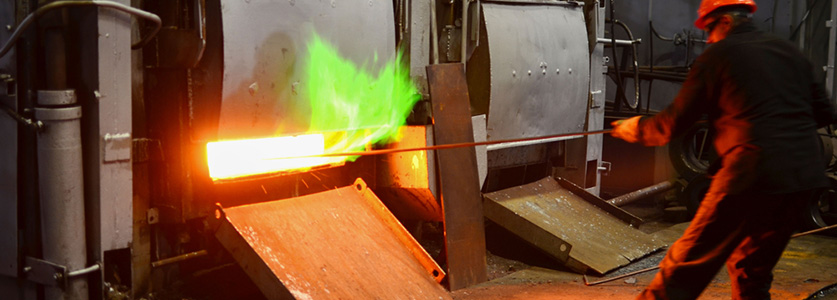Nitrogen Quenching – What Is Gas Quenching
March 10, 2020
Quenching is a very common technique used in the heat-treating process for steel. The quenching process helps to prevent low-temperature processes like phase transformation by shortening the thermodynamic and kinetic windows for these reactions.
Quenching is frequently used to increase subject hardness by reducing the crystal grain size of plastic and metallic materials.

What Is Gas Quenching?
Gas quenching is a form of quenching that uses gas as a quenching media instead of liquid. Gas quenching typically uses nitrogen gas, helium, argon, hydrogen, or some mix/blend of these to quickly cool parts from their critical temperature. The metal parts to be quenched can be either alloys or ferrous metals.
Gas quenching has several advantages.
- Gas quenched materials are cleaner with no surface residue (this eliminates the need for rinsing and liquid quenching media disposal).
- Gas quenching facilitates cooling that is more uniform and causes less distortion than liquid quenching.
- Gas quenching can use a medium that is easily produced on-site, such as nitrogen gas produced by an on-site nitrogen generation system.
Nitrogen Quenching
Nitrogen quenching is a type of inert gas quenching that uses a cost-effective medium that can be generated on-site. PSA and membrane nitrogen generators can be used for industrial nitrogen gas production, eliminating the need for the transportation and storage of compressed gas cylinders.
Heat Transfer Coefficient of Nitrogen
Because of the size and weight of nitrogen gas molecules compared to other gas media like hydrogen and helium, nitrogen gas has a smaller heat transfer coefficient. However, increasing the pressure of your quenching gas medium will improve the heat transfer coefficient of your gas quenching system. This pressure increase paired with the cost-efficient production of nitrogen gas makes it a feasible medium for your gas quenching process.
Nitrogen Quenching Process
The only cooling mechanism in the nitrogen quenching process is convection. The furnace design, loading arrangement of each the workpieces in the furnace, and the size of the workpieces being quenched will all affect the nitrogen gas quenching process.
Many applications will use high-pressure gas quenching since increasing the pressure of nitrogen gas will also increase its heat transfer coefficient. Increasing the velocity of the nitrogen gas being introduced to the furnace will also increase the heat transfer coefficient. However, powering a blower to increase velocity is much costlier than using a nitrogen booster compressor to increase pressure.
After heat treating your workpieces, a cooling fan will introduce the nitrogen gas into the furnace, rapidly cooling your parts from their critical temperature.
GENERON Has the Gas Solutions You Need
GENERON® is a trusted provider specializing in the design, manufacture, engineering, and servicing of custom process air and gas separation and compression solutions. We’ve been supplying process packages for over 50 years and have well over 100 patented technologies to support your industrial process needs.
Contact us online today for a quote on a nitrogen gas generator or for more information about how our process gas solutions can serve your nitrogen quenching needs.
